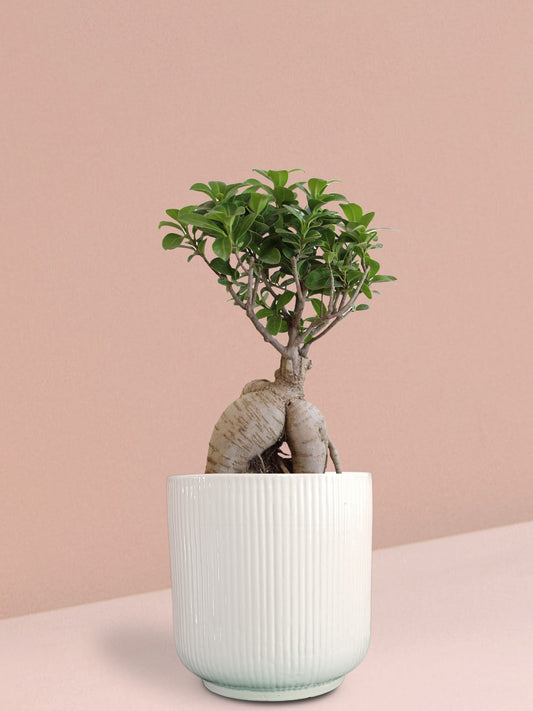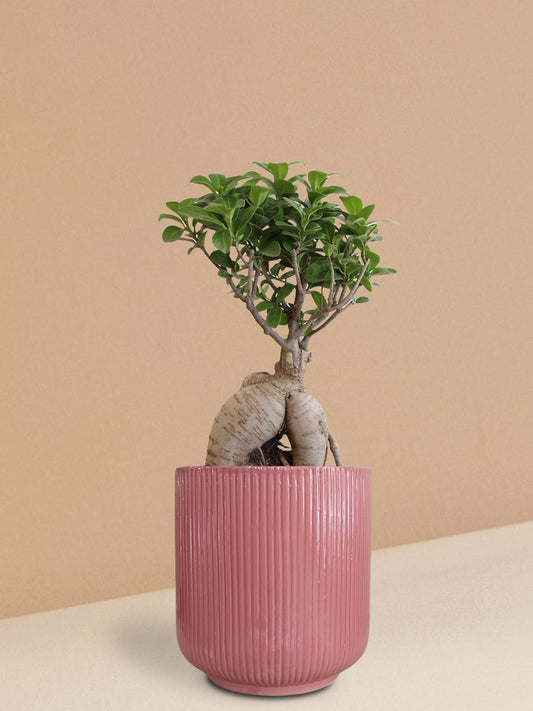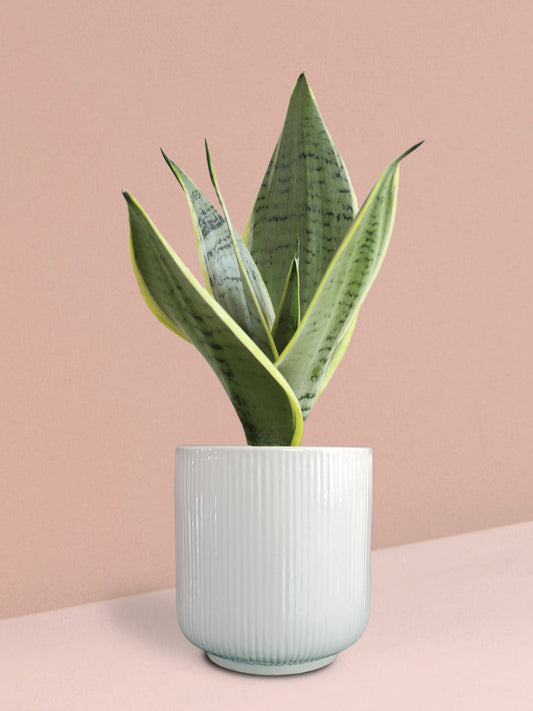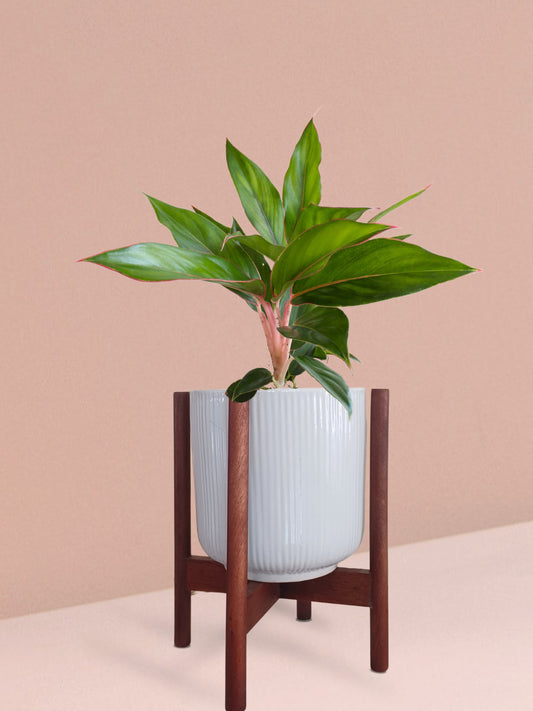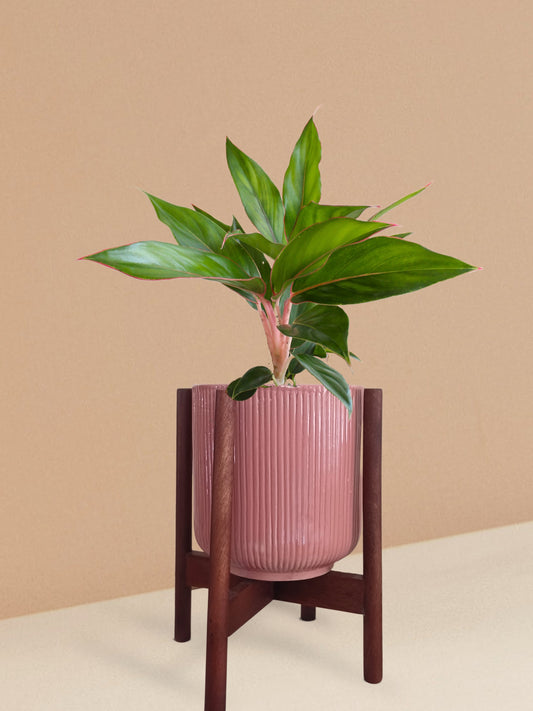
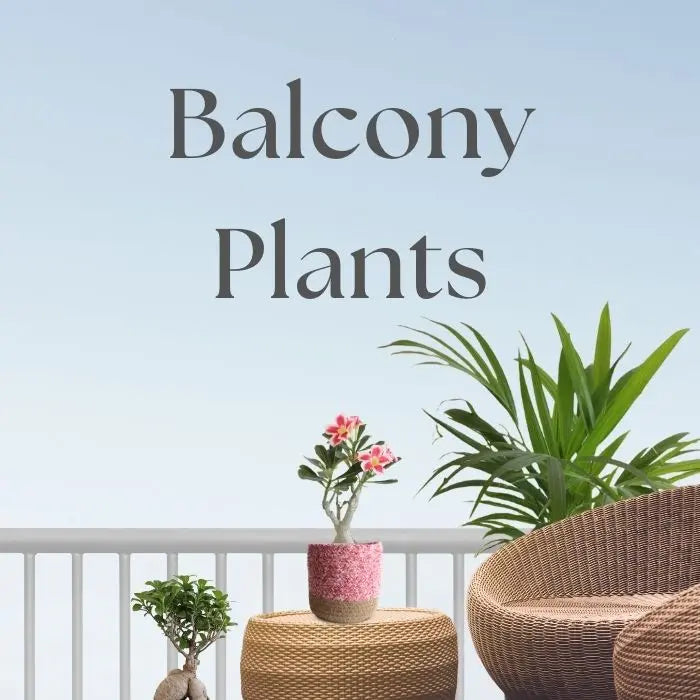
-
Adenium Desert Rose Any Color (Large)
Regular price From ₹ 1,239Regular priceUnit price per₹ 1,549Sale price From ₹ 1,239Sale -
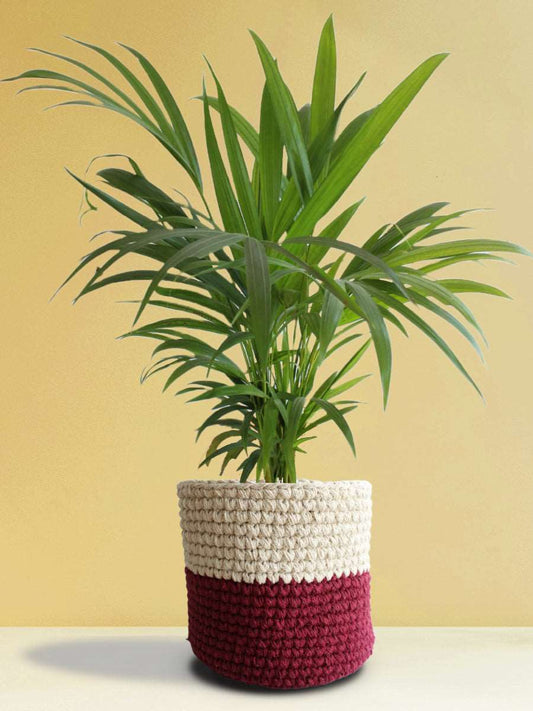
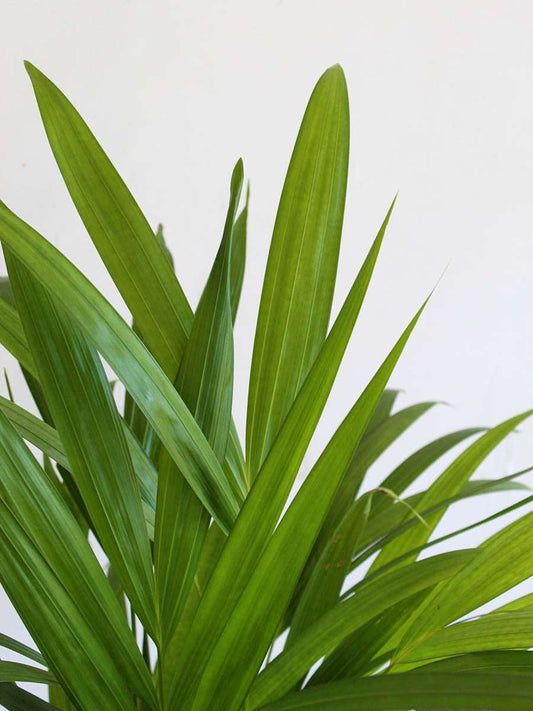 30% Off
30% OffAreca Palm (X-Large)
Regular price From ₹ 1,749Regular priceUnit price per₹ 2,499Sale price From ₹ 1,749Sale -

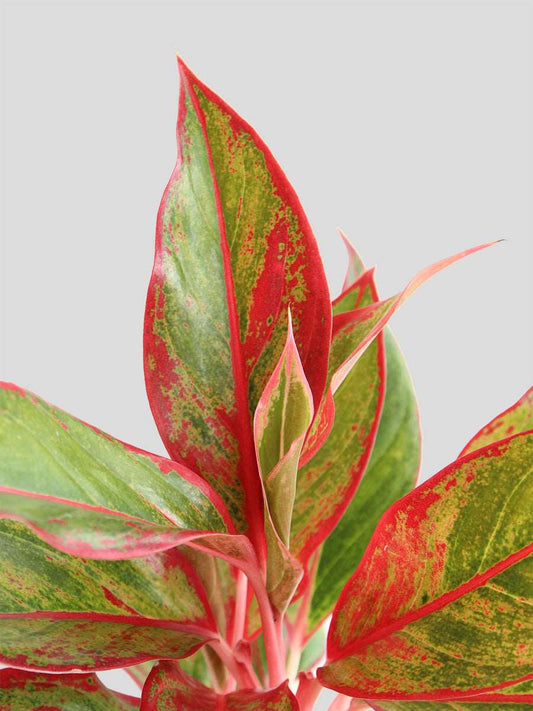 20% Off
20% OffAglaonema Red Lipstick (Large)
Regular price From ₹ 1,159Regular priceUnit price per₹ 1,449Sale price From ₹ 1,159Sale -

 25% Off
25% OffRubber Plant Burgundy (Large)
Regular price From ₹ 899Regular priceUnit price per₹ 1,199Sale price From ₹ 899Sale -
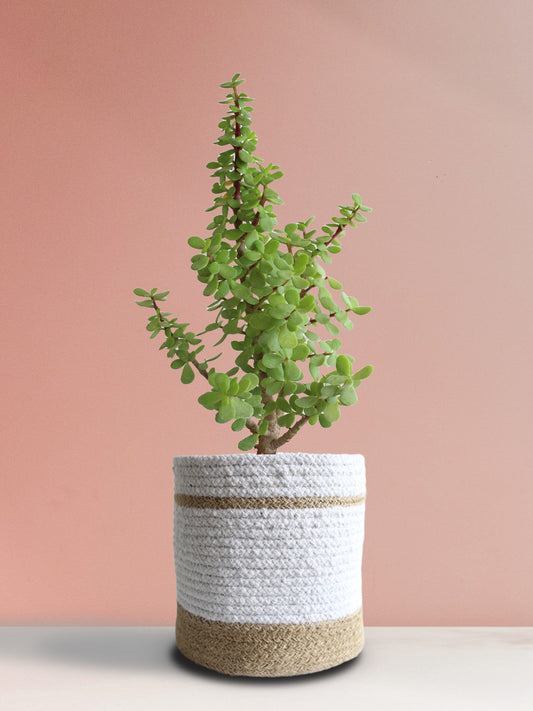
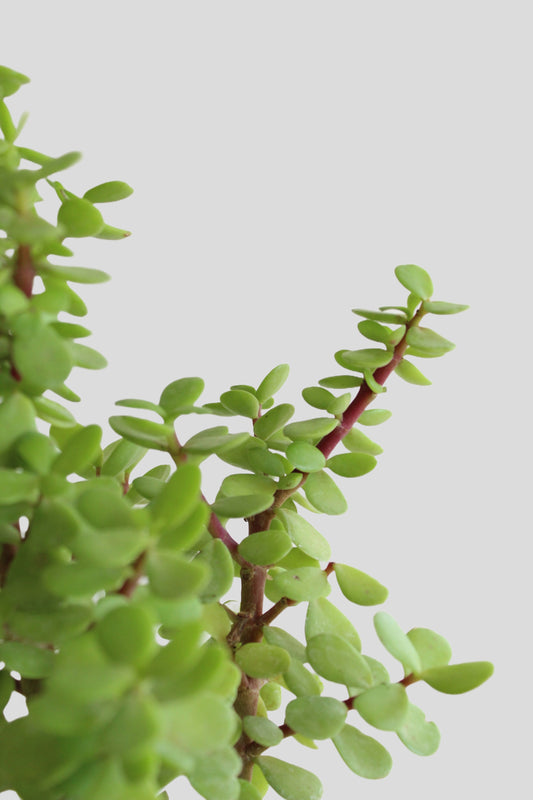 40% Off
40% OffJade Mini (Large)
Regular price From ₹ 659Regular priceUnit price per₹ 1,099Sale price From ₹ 659Sale -
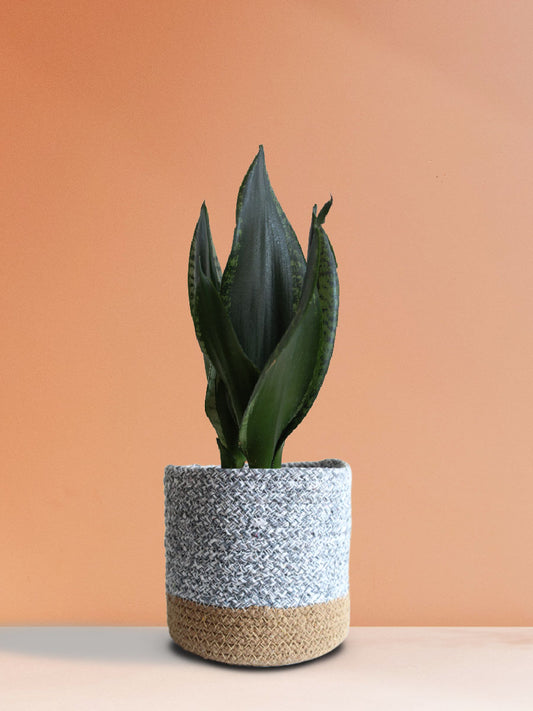
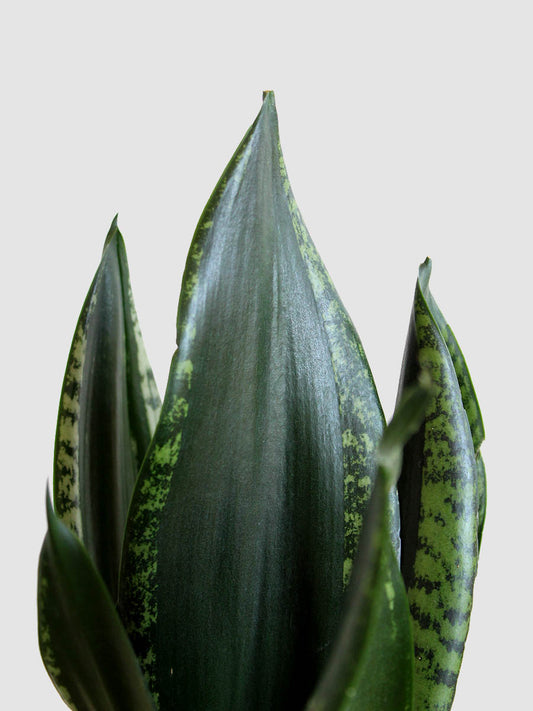 20% Off
20% OffSnake Plant Whitney (Medium)
Regular price From ₹ 799Regular priceUnit price per₹ 999Sale price From ₹ 799Sale -
Ficus Ginseng Bonsai Plant in Ceramic Pot (Large)
Regular price ₹ 3,279Regular priceUnit price per₹ 4,099Sale price ₹ 3,279Sale -
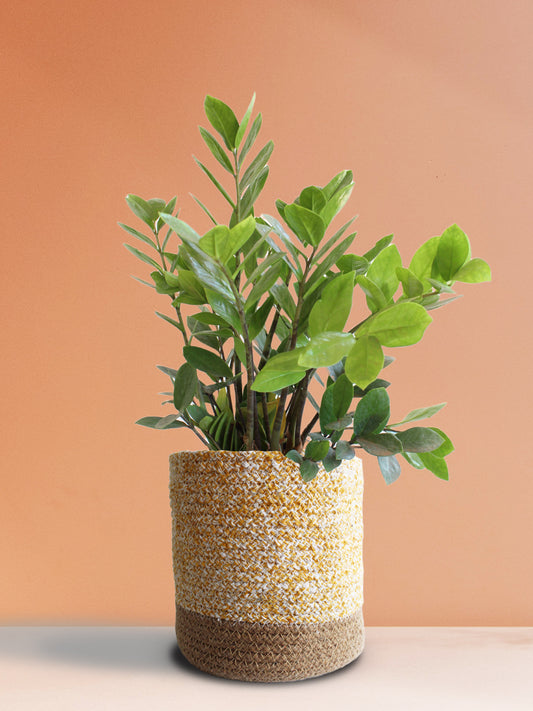
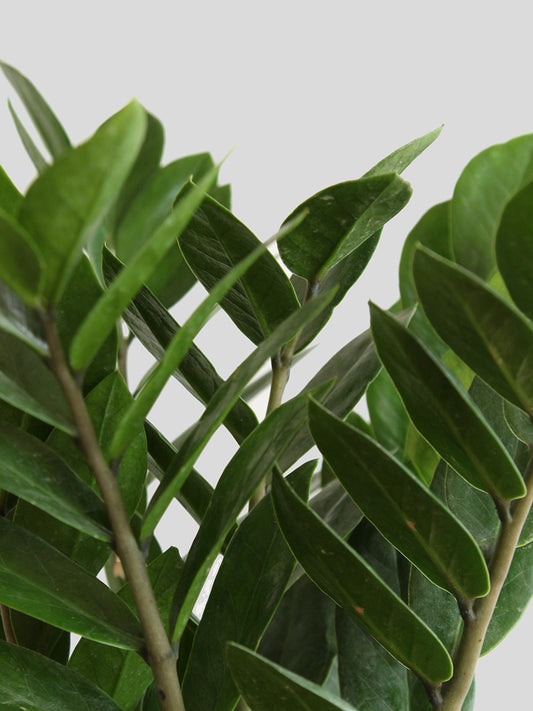 20% Off
20% OffZZ Green (Large)
Regular price From ₹ 959Regular priceUnit price per₹ 1,199Sale price From ₹ 959Sale -
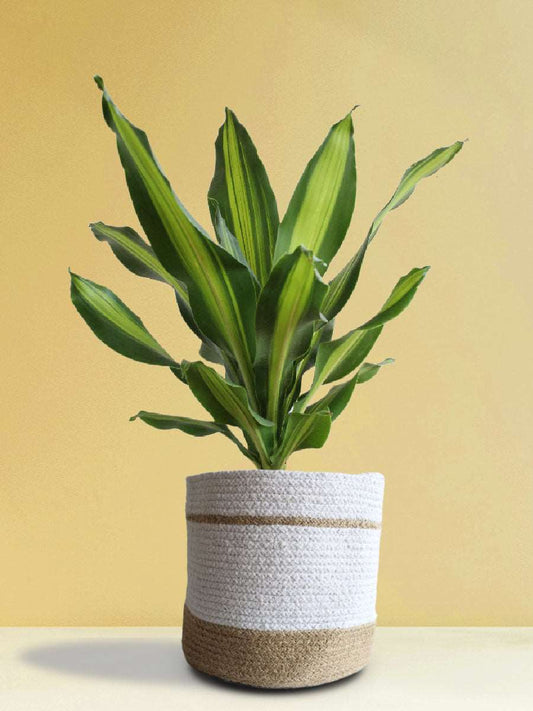
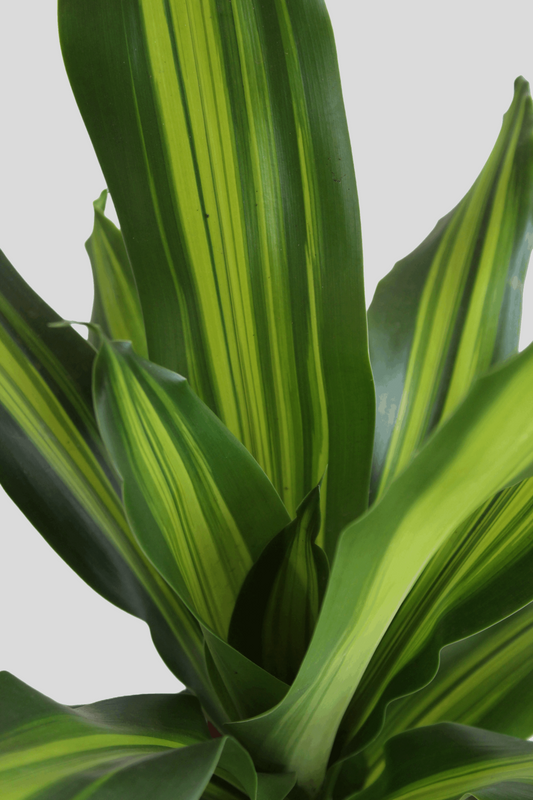 20% Off
20% OffDracaena Dara Singh (X-Large)
Regular price From ₹ 1,919Regular priceUnit price per₹ 2,399Sale price From ₹ 1,919Sale -
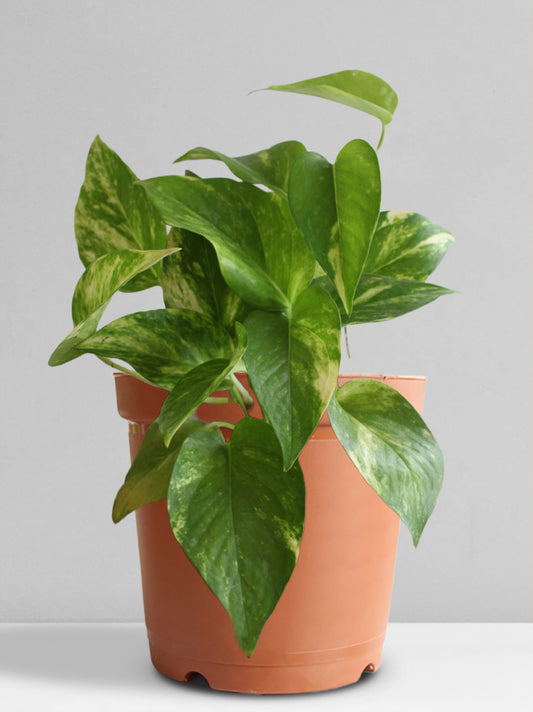
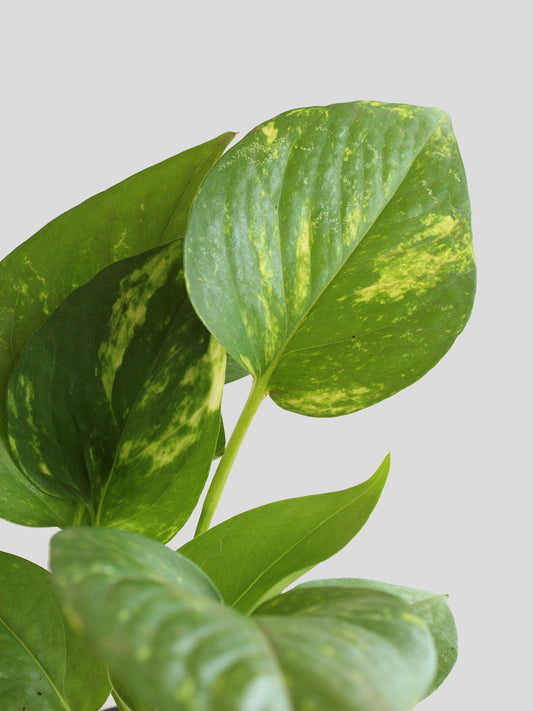 30% Off
30% OffMoney Plant Gold King (Medium)
Regular price From ₹ 489Regular priceUnit price per₹ 699Sale price From ₹ 489Sale -
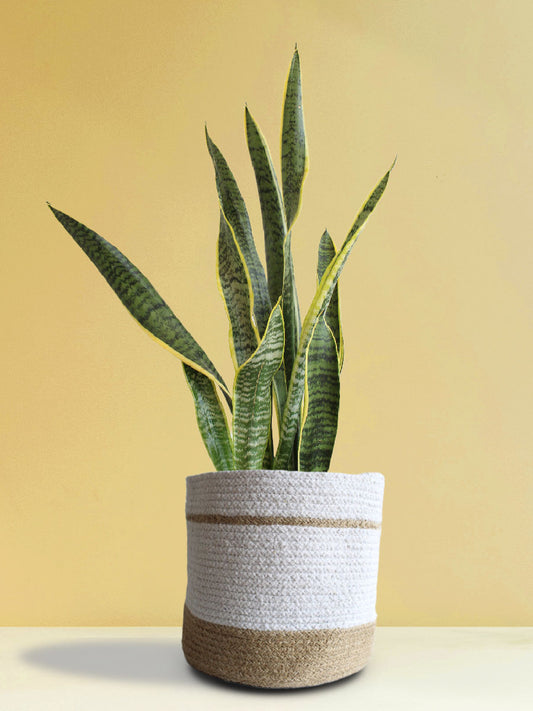
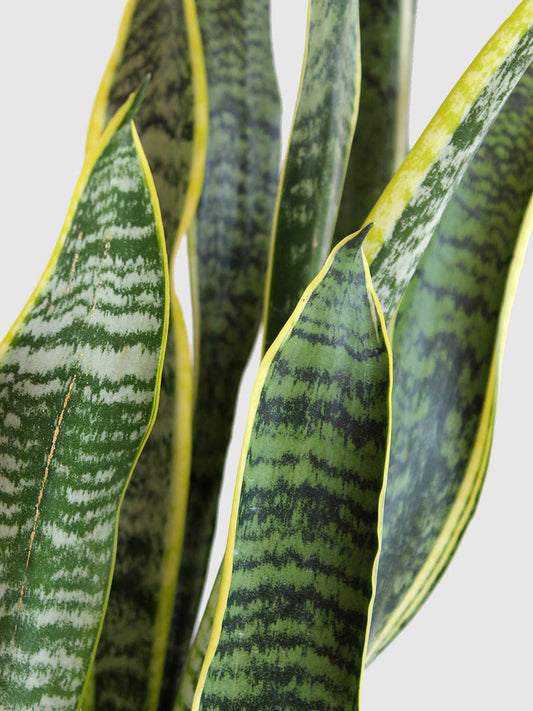 20% Off
20% OffSnake Plant Laurentii (X-Large)
Regular price From ₹ 1,999Regular priceUnit price per₹ 2,499Sale price From ₹ 1,999Sale -
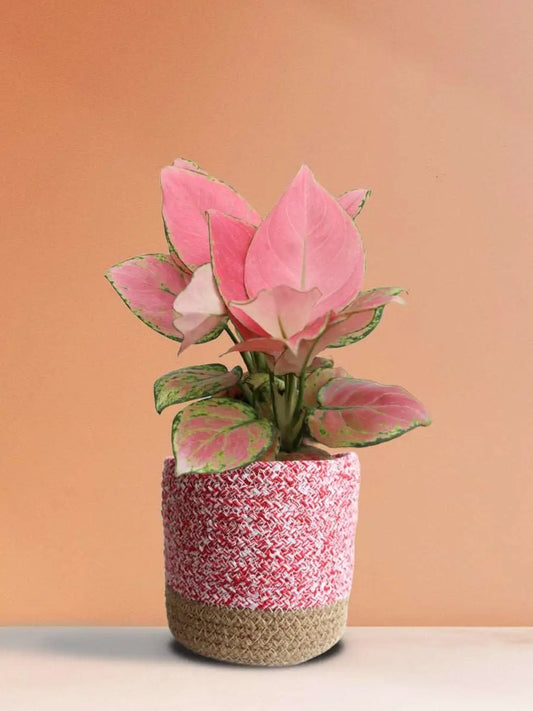
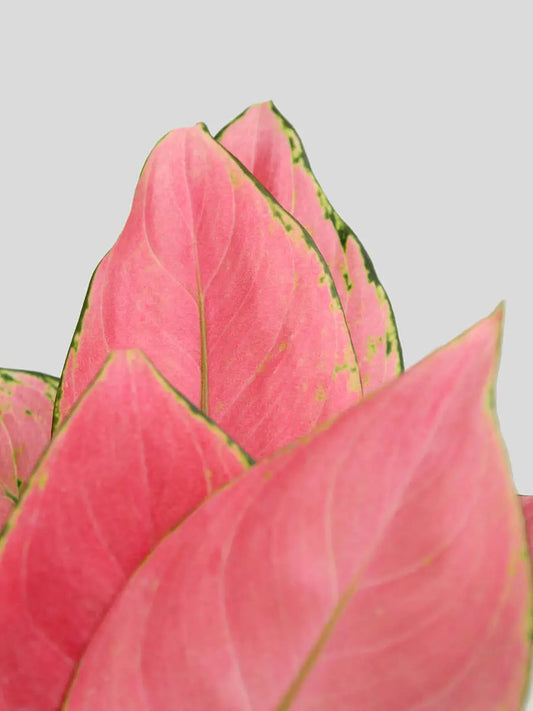 20% Off
20% OffAglaonema Pink Anjamani (Medium)
Regular price From ₹ 759Regular priceUnit price per₹ 949Sale price From ₹ 759Sale -
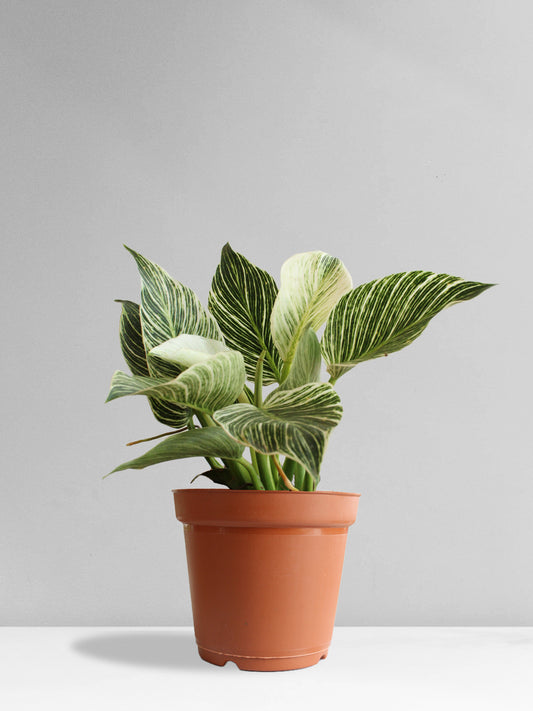
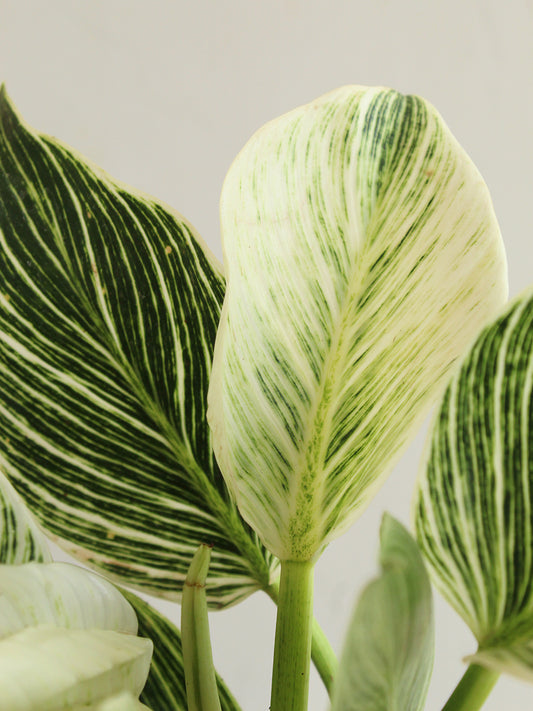 25% Off
25% OffPhilodendron Birkin (Large)
Regular price From ₹ 861Regular priceUnit price per₹ 1,149Sale price From ₹ 861Sale -
Snake Plant Silver Queen in Ceramic Pot (Medium)
Regular price ₹ 2,079Regular priceUnit price per₹ 2,599Sale price ₹ 2,079Sale -
Aglaonema Black Lipstick Plant in Ceramic Pot (Medium)
Regular price ₹ 1,999Regular priceUnit price per₹ 2,499Sale price ₹ 1,999Sale -
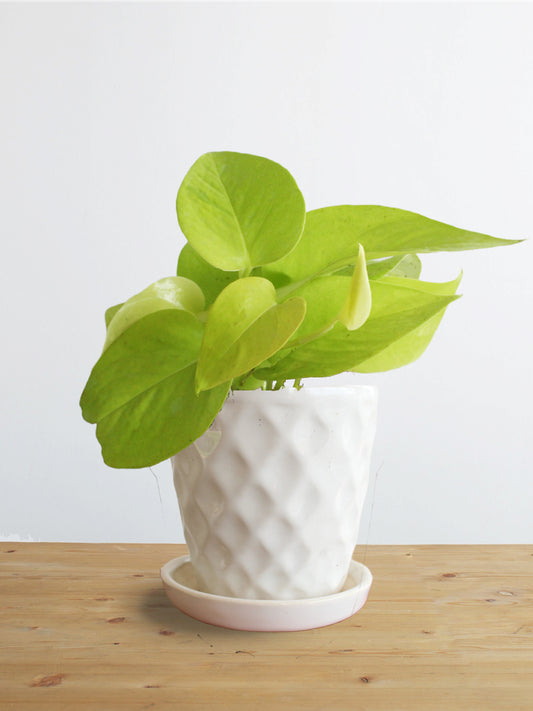
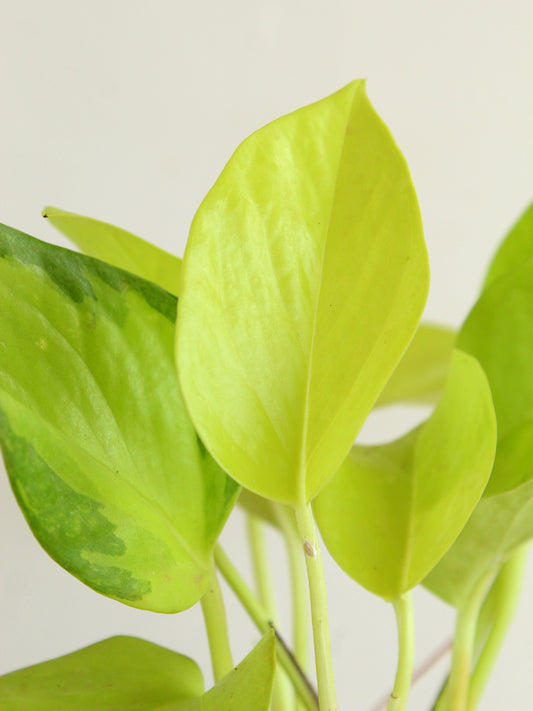 25% Off
25% OffMoney Plant Golden (Small)
Regular price From ₹ 561Regular priceUnit price per₹ 749Sale price From ₹ 561Sale
Buy Balcony Plants Online
Balconies provide a great place for plants in your urban home. A mix of sun and shade helps plants to make enough food without getting their leaves burnt. Gardening on a balcony is an alternate option for urban residents who want to enjoy the sight of greenery. It's an excellent approach to making modest outdoor spaces look lovely and full of plants. Moreover, having an indoor plant for a balcony garden is like breathing fresh air in a place where concrete is common. Houseplants add a personal touch of nature to a space with limited outdoor access. They substantially improve the visual and environmental quality of city life.
Keep scrolling to discover Greenkin plants for the balcony. Whether you are city-bound or just looking to add some green to your outdoor space, Greenkin has compiled a list of balcony plant selections as well as care and placement tips.
Buy Indoor Plants for the Balcony
How amazing that a balcony can become a private garden. Weekday individuals, calm peace seekers, and keen book readers can unwind in those balcony gardens. A beautiful plant-filled balcony can make morning or evening with tea or coffee and a lounge chair the ideal companion. Sounds interesting! Let’s create a lovely outdoor space by buying indoor plants for the balcony. Now, where to buy plants for balconies online? Welcome to Greenkin Plants for a balcony!
Greenkin offers a large collection of Balcony plants, from 4-feet tall plants or 8-inch small plants to medium-sized balcony plants online, at affordable prices to help you design your balcony. You need sturdy, wind-, rain-, and sun-resistant plants for your balcony. Greenkin's set of plants can withstand wind, rain, and sun even in a little to large space balcony. So, shop indoor plants now to bring colour to your balcony.
Why Choose Greenkin to Buy Plants for Balcony
Worried about picking out indoor plants for the balcony regarding good quality? Don't be! With just a few clicks, Greenkin lets you buy houseplants for your balcony from home with 100% satisfaction. Browse our collection of beautiful, high-quality plants (indoor plants for balcony) to bring a little touch of nature to your home or workplace balcony. The nicest part is that we include a collection of care instructions, frequently asked questions, and helpful hints with every plant. No matter the size of your home, Greenkin's exotic indoor houseplants will be the ideal addition.
Furthermore, every plant, including those for the balcony, is carefully selected and examined before being potted in nutrient-rich cocopeat, garden soil, perlite, vermicompost, and other consumables. In addition, our expert gardeners are always happy to answer any queries you may have and assist you in finding the perfect plant or providing guidance on sustainable decor.
Things to Consider Before Buying a Plant for a Balcony
Gardening makes most people happy and connects them to nature. Thus even a small garden on a small balcony can improve people's well-being. However, a balcony garden may be a reflection of your style and a wonderful place to relax any time of year with a little planning and the help of the tips given here:
- Measure your place's balcony's size: Consider balcony size before choosing plants. It is recommended that the space not be overcrowded with plants. If your balcony space is less, then maximise your space with vertical planting. Grow climbing plants in hanging planters, wall pots, racks, or trellises.
- Give careful consideration to plants’ maintenance: Select plants that fit your lifestyle and upkeep needs to keep your plants healthy and vibrant.
- Prioritise safety: Always hang planters securely and place larger plants on solid platforms to prevent them from falling.
- Plants for Crowded Balcony: Use purifying plants like spider plants, peace lilies, or snake plants to combat pollution. Vertical planting helps to make the most of available space. Hanging planters with abundant vines offer greenery without compromising foot space.
- Ground Balcony Gardening: A combination of air purifying and flowering plants in window boxes and carefully positioned taller plants in ground pots is ideal to create a visual appeal.
- Insufficient lighting: Not every balcony is graced with sunlight. Incorporate plants that thrive in shadow, such as ferns, bromeliads, and tropical leaf plants.
Benefits of Having Plants in Balcony
Whether we have a limited amount of space or reside in a crowded location, there are many benefits to planting plants on a balcony. Some of the benefits include the following:
- Plants on the balcony improve air quality: Air-purifying plants function by absorbing carbon dioxide and then releasing oxygen as a byproduct of the photosynthesis process. This is especially useful in metropolitan regions where large buildings and high traffic can trap and generate pollutants.
- Plants on the balcony create a visual appeal: Adding plants on the balcony is a great way to boost its dull appeal and make it seem more like a serene place.
- Plants on the balcony can improve your mood: Many studies have shown that the sight and smell of plants can improve your mental health and happiness. Plants provide more than just a refreshing shade and rustling. They can tackle stress, anger, and anxiety.
- Plants on the balcony enhance temperature regulation: Plants shade and minimise the heat that hits the building surface, helping to regulate temperature. This makes the living space even more comfortable, especially during the hot summer months.
- Plants on the balcony act as noise cancellation: Plants naturally minimise noise and ecological harm through sound reduction. The ecosystem function of plants reducing noise pollution is called a “buffer zone”.
- Plants on the balcony attract mini wildlife habitat: Balcony plants attract a variety of birds, bees, butterflies, and beneficial insects. This would create a miniature ecosystem.
- Plants on the balcony help to connect with nature: A balcony garden can give urban balconies a sense of lushness and a sense of connection with nature, which we feel most acutely when we're outside in the garden.
- Vastu benefits of having plants on the balcony: Patios and balconies, according to Feng Shui principles, connect indoor and outdoor spaces. It serves as a portal to your home, allowing you to receive chi energy. Additionally, incorporate plants that attract chi energy, such as fig trees, areca palms, money plants, ivy, and lucky bamboo plants.
How to Choose the Right Balcony Plants
Balconies are a great place for plants in urban homes. Plants make for great balcony décor and liven up the aura. Note the below points while converting your balcony into the perfect place for coffee and book reading.
- Size of the balcony: Needless to say, the larger the balcony, more is the space to add plants. But did you know that you can create a jungle vibe even on a smaller balcony? The size of your balcony determines the size of the plants that you should buy. For example, a small 15 square feet (3 feet by 5 feet) balcony can accommodate 1 chair, 1 stool, 1 XL-sized (5-feet tall) plant, 2 Large 3-feet tall plants, 4 to 6 medium-sized (2-feet tall) plants, 8 to 12 1-feet small plants, and 4 hanging plants. For a larger balcony, you can add 1 XL-sized plant for every 2 square feet of additional area.
- Sunlight settings of the balcony: While Indoor Plants love the shade, outdoor plants thrive in direct sunlight. So choose your plants based on the amount of sunlight your balcony receives. A general rule of thumb is to look for indoor plants if your balcony receives indirect light or a maximum of 3 hours of direct morning sunlight, and outdoor plants in case the balcony gets more than 5 hours of direct sunlight. So bright sunny spot deserves outdoor plants, and shaded areas deserve indoor plants.
- Your experience level as a gardener: Check your experience level as a plant parent before buying balcony plants. If you are a beginner, it is best to buy robust and hardy plants like Snake Plant, Pothos, Philodendron Ceylon, ZZ Plant, and Rubber Plant. An intermediate-level gardener can look for plants that need a little more care and pruning, like Orchid, Purple Shamrock, Zinnia, and Peace Lily. If you are an expert gardener, then you can try out Gardenia, Poinsettia, Calathea, Kalanchoe, and Begonia.
Placement Guide for Balcony Plants
Create an urban green paradise on your balcony. With the correct plants and a little imagination, you can transform your space into a lovely woods hideaway. Some of the following guiding tips for placing plants on your balcony:
1. Use the combination of Sunlight and Style:
Simply add the correct plants to your balcony to transform it into a stunning outdoor haven. When choosing which plants to plant, consider both sunlight and visual appeal.
- Sun-drenched Balcony (facing South): Add Mediterranean style to clay pots with trailing Succulents, philodendrons, strings of pearls, and more. Tall plants like Chamaedorea Palm or Areca Palm add a sense of richness to your space. Decorate the balcony rails with climbing vines such as Copper Leaf, many flowering plants, indoor plants like Monstera Minima, Philodendron Oxycardium Brasil or more.
- Balcony with some sunlight (facing East or West): Use leafy plants like Caladium or ferns in hanging pots to create a lush tropical look. Add colour with exotic flowering plants. Seating places can be adorned with Anthurium, Dracaena, Palms and Aglaonema plant leaves of varying colours and patterns for a more exclusive look.
- Covered balcony (facing north): Choose plants that can handle low light, such as philodendrons with their delicate petals, Jade with their varied foliage, and bromeliads with their unique blossoms. Also, ferns and spider plants thrive in shaded areas, providing a natural touch. Woven baskets with ivy or hanging philodendrons can add a soft touch to the balcony's perimeters.
2. Types of Planters and Pots for Balcony Plants:
Balcony gardening requires the right pots or containers. The correct containers hold soil and plants and enhance your garden's appearance. From permeable clay to reclaimed wood, consider container materials when choosing balcony containers.
- Ceramic or terracotta pots, noted for their natural beauty and breathability, can make the plants healthier. Clay pots prevent waterlogging. This is because clay is permeable. Clay containers allow water and liquid fertiliser to evaporate from the pores, generating moist soil.
- Incorporate lightweight, durable fiber pots. Their diversity of colours, sizes, and forms makes them easy to match to your balcony and style. These pots will keep your plants happy with minimal care. Due to their small weight, they are easy to shift in changing weather.
- Self-watering pots are ideal for busy persons or beginners. A reservoir in these customised pots draws water to the plant's roots, which evaporates. Since the water source is constantly at the bottom of the growing case, this smart design reduces watering.
3. Add some finishing touches to pop some color:
Use colourful flowering plants, cascading vines or companion plants in stacked pots to maximise vertical space. And mix-matching pots with complementary colours and textures of plants will produce a cohesive and attractive look.
Best Balcony Plants With Placement Location
Beautify your environment with minimal effort by selecting plants that thrive on your balcony. Continue reading to discover the perfect indoor plant for your balcony:
- Areca Palm – The Areca palm plant is an air-purifying plant that gives a tropical feel to your balcony garden. It prefers bright, indirect light and should be watered when the topsoil is dry and should not be overwatered.
- Rubber Plant – One of the ideal houseplants, the rubber plant is liked for its broad, glossy leaves. It demands little and will grow with or without light. It likes well-drained soil. The Rubber tree is a very decorative plant, making an ideal evergreen outdoor balcony plant.
- Jade Plant – The jade plant represents good luck and is easy to grow indoors on the balcony. It has plump, waxy green leaves that make it look like a bonsai. These indoor plants for the balcony prefer bright sunlight and should be watered appropriately when the lower soil is dry only.
- Ficus Bonsai Ginseng – Ficus Bonsai is an artistic and rewarding tree to possess on a balcony. This plant prefers bright indirect light and should be watered moderately and the soil should not be too wet.
- ZZ Plants – The ZZ plant, also known as the eternity plant, is highly resistant to low light. This plant looks beautiful via hanging baskets on the balcony.
- Dracaena Marginata (Madagascar Dragon Tree) – The Dracaena Marginata plant for the balcony creates a visual appeal due to its long, thin leaves with red edges. It tolerates low light and needs well-draining soil.
- Snake Plants – A succulent plant like the snake plant is a wonderful appealing indoor plant for balcony to enhance 24/7 air quality. These plants can tolerate low light and need well-draining soil.
- Adenium Desert Rose Plant - The Adenium Desert Rose plant, similar to bonsai, has thick, fleshy trunks and trumpet-shaped flowers in bright colours that look best in window corners. They love dry conditions and can endure drought. When it comes to ensuring your plant is thriving, desert roses need twice the amount of sunlight as any other plant.
- Aglaonema Plants – Aglaonema, also known as Chinese evergreen, with foliage that comes in a range of colours and patterns is ideal for balcony plants to create a colourful natural oasis. These plants can tolerate low light and need moist soil for healthy growth.
- Philodendron Plants – A variety of philodendrons is a popular climbing plant that enhances the balcony look. They come in many different leaf shapes and sizes. They tolerate low light and need well-draining soil.
- Money Plants – Money plants are easy-to-grow vines that are believed to bring good fortune and wealth. It tolerates low light and needs moist soil. These trailing plants look good on the balcony in hanging or vertical gardening style.
- Monstera Deliciosa (Swiss Cheese Plant) – Monstera Deliciosa has a large-leaved plant that makes a unique statement on your balcony. It tolerates low light and needs moist soil.
- Copper Leaf - Also known as Jacob's coat, Copper Leaf Plant adds shades of color that resemble copper. Copper Leaf is a very hardy plant and can be grown via stem cuttings. It likes full sun, so it is best kept in bright sunny spots on the balcony.
- Eranthemum - This flower-bearing plant has colored leaves, with the red-colored ones being the most commonly found. Eranthemums are hardy plants, like Copper Leaf, and like some sun and some shade, making them a great plant for balconies.
- Ficus Benjamina - Commonly called Weeping Fig or Ficus Tree, Ficus Benjamina is the official tree of Bangkok. It provides a thick bush of waxy dark green leaves. They are tall plants and can be grown up to 5-feet to 8-feet tall in pots on balconies. In their natural habitat, they grow up to 100 feet tall.
- Croton - You would have seen Crotons across business parks and coffee shops around the city. They are hardy plants, and can instantly add yellow, green, white and red shades to your balcony. You can look for large leaves (Croton Petra), medium-sized leaves (Croton Captain Kidd), or thin slender leaves (Croton Golden Dust thin).
- Schefflera - A mini-tree, Schefflera is a gorgeous balcony plant that can be grown up to 8 feet in a pot. It creates a bushy appearance and has a pattern of leaves that resembles an umbrella. The plant is also known as Umbrella Plant. You can either find a green variety or a variegated variety of Schefflera for your balcony.
How to Care for Balcony Plants
Taking care of a plant is essential for healthy plant growth in balconies. Learn how to care for balcony plants:
Regular Maintenance Need for Balcony Plants:
- Lighting Needs: Always research plant light needs first because some plants need more sunlight, while others prefer shaded shelter. Moreover, protects light-sensitive plants from direct sunlight on balconies. If your top balcony plants face south or west, they are more likely to have leaf burn. Relocate them to regions that do not receive a full day of direct sunlight, and water them deeply every morning. Consider grouping balcony plants, with more delicate varieties like ferns behind harder and larger ones.
- Watering Guide: Finding the appropriate watering balance is crucial. Watering frequency depends on plant kind, pot size, drainage, and weather. Check for moisture in the soil with your finger to see if your plant needs water.
- Soil and Fertilisation Requirements: Use a well-draining potting mix for balcony plants. Additionally, balcony plants must fertilise often in spring and summer. An all-natural fertiliser, like a seaweed solution, or a balanced one is the best choice.
Some Basic Routine Maintenance Recommendations for the Balcony Plants:
- A balcony plant's needs change with the seasons, so it's important to adjust how much light, water and fertiliser it needs. Furthermore, certain plants may be sensitive to cold and must be moved indoors when temperatures drop.
- Make sure that containers have drainage holes to prevent waterlogging.
- Look for signs of pests, illnesses, or droopy foliage. Eliminate dead or yellowing leaves to improve ventilation and prevent disease transmission.
- To control pest invasions, use organic neem oil treatments or insecticidal soaps. isolate affected balcony plants and use a specific solution for dealing with plant diseases.
- Regularly pruning any long, thin growths on a balcony plant to encourage it to grow bushier.
- Whenever necessary, repotting a rootbound balcony plant moves it to a larger pot.
Tips for Balcony Plants Decor
Thinking of design ideas for your balcony? Our plant stylist suggests adding comfortable seating before adding the plants. Once the seating is decided, you can estimate the space you have for adding plants. Below is what our Plant Stylist recommends for decorating balconies with plants:
Buy 1 or 2 XL (5-feet tall) plants for corners near the wall. The best bet is to add a Ti plant for a tropical vibe or a Weeping Fig for a modern vibe. Next to the XL-sized plant, keep a large (3-feet tall) plant. Go for Dieffenbachia, Philodendron Ceylon, Croton, or Copper Leaf Plant. Next is to add multiple medium and small plants around the XL and large plant combo. Choose either green foliage, colored foliage, or flowering plants as per your taste.
Now that one of the corners in your balcony is designed, buy another large plant for the diagonally opposite corner. This should cover the plants that you can keep on the floor. Now you can add hanging planters from the railing, or shelves on the wall for more plants. Add Pothos, Wandering Jew, Turtle vine, and Philodendrons to create a dreamy appearance.
Best Flowering Plants for Balcony
Flowering plants are generally seasonal, but there are perennial flowering plants as well that you could look at for your balcony.
To add colors to your balcony, let us first explore a list of perennial flowering plants that not only survive all the weather conditions in India but mostly bloom throughout the year. You can buy flowering balcony plants like Hibiscus, Button Rose, Euphorbia Milli, Ixora, Jasmine, Adenium, Allamanda, Vinca, and Bougainvillea.
Now that you have year-round blooming, look for some seasonal flowering plants for your balcony. During winter, add colorful flowers like Aster, Salvia, Petunia, Pansy, Ice Plant, Gazania, and Dahlia. For summers, buy Zinnia, Cosmos, and Phlox.
FAQ
When choosing plants for your balcony, consider the quantity of sunlight they receive. Consider how long your balcony receives direct sunlight and whether it is in the morning or afternoon. Consider container size and plant growth. Plus, avoid overcrowding the plants.
Yes, several plants are easy to grow from clippings, which is a great way to expand the look of your balcony garden.
There are several hydroponic systems available, including some as small and enclosed as railing planters, which are ideal for growing leafy greens and fresh herbs.
Many succulents need at least a couple of hours of direct sunlight. Use a succulent/cactus mix that aims to drain well. Water should be used sparingly and only when the soil is completely dry.
Plant selection depends on balcony space, sunlight, and gardener experience. Choose compact snake plants and ZZ plants for smaller balconies. For outdoor plants in direct sunlight or well-lit indoor locations, consider snake plant and rubber plant, which are good choices for beginners, while experienced gardeners may consider Gardenia or Begonia, which are sensitive.
Choose plants that are sturdy and won't be pushed over or have their delicate leaves damaged.
Foliage plant types include snake plants, ZZ plants, spider plants, and ferns. Some examples of flowering plants are succulents, anthuriums, geraniums, marigolds, and petunias.
Yes, small plants such as tomatoes, peppers, cucumbers, beans, lettuce, and radishes thrive in pots.
Certainly, there are several aspects to consider. Strawberry, blueberry, and citrus trees can all be grown in pots.
Proper drainage is critical for your plants. Always make sure your plant pot has enough drainage. Pot size should match mature plant size to avoid root rot from excessive moisture.
Look for a container-friendly, lightweight potting soil that drains quickly. These commonly include peat moss, perlite, and vermiculite.
Each plant has different watering needs. Simply sticking your finger into the soil will tell you if you need watering or not. If the top inch or so feels dry, it is time. Ensure your plants are deeply watered to reach drainage holes.
Yes, potted-grown plants, in particular, require feeding. Use a balanced liquid fertiliser, diluted as directed. And apply it during the growing season.
Each plant's sunlight requirement is different. For example, jasmine or ferns prefer a minimum of six hours of direct sunlight. Anthurium, Dracaena, palms, or more prefer partial sunlight (4-6 hours of direct sunlight) striking the area. Covered, shaded balcony plants like snake plants, peace lilies, ZZ plants, and most ferns.
Plants like coleus, begonias, impatiens, and ferns, as well as flowering plants and herbs, thrive well when exposed to morning sunlight.
Various plants, including lantana, ferns, succulents, snake plants, bougainvillaea, portulaca, and herbs such as rosemary and thyme, are ideal to plant in various planters and pots. Try to plant plants in light-coloured pots. Use well-draining soil and mulching for healthy plant growth. This will allow plants to improve their breathability and prevent root rot.
Succulents like snake plants, jade plants, aloe vera, and more are fleshy plants that store water in their leaves, making them ideal and resilient to heat and drought.
Arrange the taller plants at the back to avoid shading the smaller ones. To promote uniform and consistent growth, alter your plants' positions on a regular basis.
Use vertical gardening techniques in the form of trellises made for creeping plants, wall-mounted planters, tiered planters, and hanging baskets to incorporate plants on a small balcony. Planters for railings allow you to make the most of your limited space by providing more locations for growth.
Ideal creeper and climber plants for a balcony are Monstera Minima, Ceylon Golden, Philodendron Pink Princess, Philodendron Oxycardium Brasil, Broken Heart Plant, Money Plant Golden, and more.
Picking a few colourful plants Plants like Anthurium Mini Red, Aglaonema Pink Anjamani, Aglaonema Suksom Jaipong Plant, Calathea Sanderiana, Calathea Peacock, Aglaonema Red Valentine, Philodendron Pink Princess, Philodendron Birkin, and more will create a colourful balcony garden. Combine tall, medium, and trailing plants to create an appealing visual impact.
You can choose from a variety of flowers, such as roses, lavender, sweet alyssum, gardenias, and jasmine, to add fragrance to your balcony.
Choose colourful and flowering plants with a diverse range of flower or foliage styles and colours to attract and sustain several kinds of pollinators.
Incorporate hardy plants such as snake plants, pothos, ZZ plants, Aglaonema red lipstick, Dracaena dara Singh, areca palm, pachira money tree, chamaedorea palm, oxycardium plants, rubber plants, and small shrubs to keep the garden green all year.
Indoor hardy plants such as snake plants, pothos, Dracaena dara Singh, areca palm, pachira money tree, rubber plant, pansies, wintergreens, and more are best suited to thrive on balconies during all seasons, including winter. Make sure to check the hardiness of your particular area.
Plants that are not healthy attract bugs, which will become pests to them. It's critical to ensure they receive the attention they require. Inspect regularly for pests, particularly on the undersides of leaves. Use neem oil or beneficial insecticides to prevent pests.
There could be several causes due to overwatering, underwatering, a lack of nutrients, too much direct sunlight, or an insect infestation. Take a closer look at it using signs to fix plant unhealthy leaf issues.
Examine the area for insects, damaged plants, faeces, and so on to identify the perpetrator. Use nature-based inhibitors, including garlic sprays and diatomaceous earth, to protect plants from intruders.
To get rid of aphids, just combine some water with mild neem oil, an organic insecticide that is effective against a wide range of insects and mites, including aphids
Plants must be repotted once their roots have grown vigorously in a circular pattern around the pot. This should happen every 1–2 years.
Yes, pruning on a regular basis provides a bushy appearance and helps to remove dead leaves and branches. On top of that, it can help regulate the overall size of a plant.
Plants grow well on the eastern, southern, and western balconies. The eastern balcony is believed to encourage growth, the southern balcony to bring prosperity, and the western balcony to bring happiness. Plants are generally avoided in the north, especially ones that blossom.
Yes, some of the most promising plants include Holy Basil (Tulsi), Money Plant, Lucky Bamboo, Jade Plant, Peace Lily, Snake Plant, Aloe Vera, and Jasmine. They are associated with happiness, prosperity, good health, and peace.
Vastu experts claim prickly plants attract negative energy to a garden. Plants with a milky sap are said to be a sign of bad luck.
Having hanging plants in your home is usually okay, but be cautious not to hang them straight over your head when you're sitting down.
According to Vastu, green and blue are common colours in the east. Southern colours include red, orange, and yellow. Colours used in the Western region include whites, greys, and metallics, whereas the Northern states are associated with melancholy and despair.
India has many potted plants for varied climates and tastes. Rubber, Copper Leaf, Snake Plant, Button Rose, Euphorbia Milli, Eranthemum, Ficus Benjamina, Ti Plant, Croton, and Schefflera are popular. These plants come in diverse sizes and hues and require different maintenance for their attractiveness on balconies.
India has many potted plants for varied climates and tastes. Rubber, Copper Leaf, Snake Plant, Button Rose, Euphorbia Milli, Eranthemum, Ficus Benjamina, Ti Plant, Croton, and Schefflera are popular. These plants come in diverse sizes and hues and require different maintenance for their attractiveness on balconies.
First, provide comfortable seating and examine the room for plant placement. Large plants like the Ti Plant or Weeping Fig merge into nooks. A weeping fig will be huge and beautifully dark green. Complement huge plants with middle and little ones. Combining a Dieffenbachia or Philodendron Ceylon with the extra-large plants creates texture.
Choose perennials like hibiscus, button rose, euphorbia milli, jasmine, or bougainvillaea to keep your garden blooming. Flowers appear throughout the year on these plants. Additionally, seasonal flowers like aster, salvia, petunia, and zinnia can brighten your yard.
Beginning gardeners may choose to use hardy plants. These plants require little care and can endure several lighting conditions. Snake plant, ZZ plant, rubber tree, and ti plant are among the options.
Greenkin offers superior balcony potted plants from top Indian producers. We carefully evaluate the plants to ensure their health and quality. We offer fertile soil mixes to help them thrive. Your plants' health and growth are our top priorities, according to the Greenkin team of horticulturists and plant specialists.
Clay pots with drainage and airflow help porch plants grow. The interior growth pot and elegant outer urn make Greenkin's premium urns unique. It self-waters and prevents root rot.
India has many climates, so choosing plants that grow locally is important. In humid places, plants need water, but hot and dry areas need drought-resistant kinds. Also, balcony plants must always be maintained. To do this, carefully monitor them and adapt their care according to the season.
India has many climates, so choosing plants that grow locally is important. In humid places, plants need water, but hot and dry areas need drought-resistant kinds. Also, balcony plants must always be maintained. To do this, carefully monitor them and adapt their care according to the season.
Yes, Greenkin helps clients create their ideal balcony greenery with customised plant landscape support. Greenkin's plant experts can help clients create balcony plant arrangements that fit their space, lighting, and taste.
Even busy people can enjoy potted plants outside their homes. If time is limited, plant succulents or cactus. Snake plants, ZZ plants, and pothos (Epipremnum aureum) are low-maintenance houseplants that even experienced gardeners can appreciate.
Vertical gardening gives small balconies more room for a variety of plants. Gardeners can arrange greenery vertically with wall hangers, trellises, and hanging baskets.
Pet-friendly plants are essential for pet owners. Spider Plant, Boston Fern, and Areca Palm are pet-friendly balcony plants. They're safe for cats and dogs. Avoid lilies, philodendrons, and aloe vera because ingestion might cause pet poisoning.
An eco-friendly and long-lasting balcony garden protects resources and reduces environmental effects. Local adjustment plants with reused containers that need less water and fertiliser should be chosen.
Get creative with plant displays to beautify your balcony. Use old crates or tin cans for a rustic look, or macramé plant hangers for a boho vibe. Hanging plants from vertical shelves or plant stands creates multi-level displays that exhibit plants of various sizes and forms.
Choose balcony plants with flower or leaf colours you like. Then choose other plants with matching blooms or foliage. Keep adding plants with matching flowers and leaves.
Check local building standards, plant variety, and balcony planting limits before choosing plants for your balcony. Outdoor horticultural guidelines may prohibit invasive plant species, plant height, or garden plants for environmental or safety reasons. Some urban areas have public safety agency prohibitions on planting plants or greenery.
Plants that are suited to the balcony environment And can tolerate indoor bright light conditions at times are called balcony plants. These plants are generally fairly easy to maintain. The common ones are the ZZ plant, succulents, Philodendron Birkin-plant, Adenium Desert Rose Plant, and Rubber Plant Burgundy and so on.
balcony plants are used to make balconies more inviting and refreshing. Some balcony plants also have benefits according to vastu and feng shui.
balcony Plants are commonly easy to maintain and make homes appealing and inviting by improving aesthetics and so are popular. balcony plants are generally planted to bring in vibrancy and tonality to the interiors.
balcony plants help in improving the overall aesthetics of the place. Bringing in a different variety of colourful plants also helps in adding textures to the indoor space. It is also said that keeping plants around makes people more productive and keeps them energetic.
Yes, plants like Spider plant, ZZ plant, Peace Lily, Adenium Desert Rose Plant, and Rubber Plant Burgundy are indoor balcony plants. They are easy to grow and maintain.
Some balcony plants might not be safe for pets. If ingested these plants can be toxic for cats and dogs. Keep them out of their reach.
Yes, balcony plants are generally Selected in such a way that they can easily thrive even when neglected. Plants like the snake plant, spider plant or the ZZ plant can normally when left unattended to. They help to keep the balcony space fresh, warm and inviting.
Yes, The snake plant is an excellent choice as a balcony plant since it is easy to maintain and grow. The snake plant is tolerant to low light conditions making it ideal for balconies that do not get much sunlight.
Yes, most of the balcony Plants are oxygen plants as almost all of these balcony plants give oxygen during the day during photosynthesis. balcony plants are generally planted to bring in vibrancy.
There are over different Types of balcony plants. Snake Plant, ZZ Green, Spider Plant,Philodendrons, Adenium Desert Rose Plant, and Rubber Plant Burgundy are some common balcony plants.
Yes, plants like the Rubber plant and the Snake Plant are considered positive according to Vastu. These plants have balcony variants.
Plants Like the money plant, rubber plant or the zz plant are excellent for keeping on the balcony as a beginner. Keeping plants in the balconies helps to boost productivity and make the environment more inviting.
There is no limit to the amount of plants one should have in their balcony. The number of plants to keep depends upon the balcony size and the height and space of the plant. Although it is recommended to keep at least 2 to 5 plants in the balcony.
Yes, certain varieties of the Rubber Plant can be an excellent addition to the balcony space as the plant is very easy to maintain and does not require much care. The plant is a symbol of luxury and grace.
Keeping flowering plants in the balcony can help to bring visual and aesthetic appeal indoors. Staying in touch with greenery helps to ease the mind and brings in a sense of relaxation which is necessary for all the creative ideas to flow.
The top 5 balcony plants that are good for beginners are the Snake plant, Spider Plant, Money plant, Philodendron, and Adenium Desert Rose Plant.
Yes, If your balcony space has a biophilic design interior include plants like the snake plants, rubber plant, ZZ plants and the money plant. Keeping greenery and colours indoors adds more character to the space.
Yes, you can decorate your balcony with plants. Make sure to take care of the sunlight requirements of each plant.
Yes, the ZZ plant is a popular choice for balconies. They are very easy to take care of.
Yes, balcony plants Can be used to add colours to your balcony space. Plants like aglaonema or button rose can bring a pop of fresh colour to your balcony.
Yes, some varieties of balcony plants like the rubber plant or the Aglaonema plant can survive more than 10 days without water. In fact, they thrive on neglect.
Keeping green plants around helps in increasing positivity and reduces stress. balcony plants not just add greenery but also help in adding vibrant hues.
Yes, balcony plants can add colours to the bohemian inspired interior design. Plants like the rubber plant burgundy or the snake plant work the best.
Yes, the button rose plant is a balcony plant that has a lot of character to it. They are very easy to take care of plus can be used to create a sensory garden landscape.
The Areca Palm plant as a balcony plant symbolises resilience and style. The plant is fairly easy to get and maintain.
Yes, crotons varieties are generally very good balcony plants. Not only are they easy to care for but they also are easy to maintain and have minimal watering requirements.
Fertilising needs depend on individual plants. More often than not, only fertilise the plant if needed.
There are many types of balcony plants, ranging from common and cheaper varieties to more rare and costlier varieties. Also, healthier balcony plants are costlier than the ones which have damaged leaves due to fungal infection.
Buying a balcony plant can help you bring warming colours indoors that are natural and inviting. Not only this , but keeping plants in the balcony will help to make the balcony more inviting and creative. Keeping plants in your balcony will help to make make will help you to Make the balcony air cleaner.
Yes, balcony plants do help in uplifting moods. Due to their vibrancy they make the space more inviting and lively.
These balcony plants are generally low maintenance. Wipe off the leaves occasionally, water the plants regularly and maintain the sunlight and temperature requirements, and you are good to go.
Undoubtedly, It is very important to adjust the sunlight settings of the balcony plant. If the balcony receives indirect sunlight, look for more indoor plants and if the balcony receives more sunlight, go for outdoor plants.
balcony plants similar to other plants can benefit from pruning. Pruning helps in new growth.
Yes, plants are an ideal choice for making your balcony welcoming and warm. These plants are a good idea as they enhance the look and feel of your space.
balcony plants range from rubber plants to flowering plants. They come in a variety of shapes and sizes, have different needs and can be used to decorate different areas of the balcony.
If the leaves of your balcony plants are drooping check if the plant is receiving proper sunlight or if it is being watered properly. Regulate the watering frequency based upon the individual needs of the plants.
For balcony plants, it is advisable to grow plants in planters with proper drainage holes. Try a Terracotta Pot or a Ceramic pot instead of a plastic container.
balcony plants browning can be a sign of burning. The plant is either rotting at the root or is getting excessive amounts of sunlight, either of which should be avoided.
If you notice the leaves of balcony plants yellow, the plant is receiving too much sunlight. Keep the plant away in a relatively shaded area.
Plants like hibiscus, bougainvillaea, and Jasmine are some year round blooming perennial flowering plants for your balcony. There are also some seasonal flowering plants like aster and salvia.
Most of the Balcony plants if taken proper care for more than a year. It roughly depends on plant selection.
balcony plants can sometimes overcrowd. Treat this problem by repotting, pruning or dividing the plant.
Some balcony plants like the zz plant or the rubber plant do well with twice or thrice a week watering frequency. Watering needs depend on each individual plant.
Wipe the leaves gently with a cloth occasionally. The leaves can gather dust on top after some time.
Treating pest infestations in balcony plants can be done by keeping the plants free of dust. Use neem oil if the problem persists.
Balcony plants need to be repotted once they have outgrown their containers. Also, if the soil is getting waterlogged consider repotting your plant.













